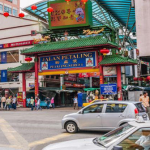
In recent years, the health and beauty industry has faced an unsettling surge in the proliferation of counterfeit products. These fake goods, ranging from skincare to cosmetics, have infiltrated markets globally, including Malaysia. Not only do these counterfeit items undermine the reputation of legitimate brands, but they also pose significant health risks to unsuspecting consumers. The dangers associated with fake health and beauty products are very real, and it’s time to shed light on the problem.
The Dangers of Counterfeit Health and Beauty Products
One of the most concerning issues with counterfeit products in the health and beauty industry is their unknown composition. Fake products often contain harmful chemicals, unregulated ingredients, and toxins that can cause serious skin reactions, infections, and long-term damage. Some counterfeit skincare products have been found to contain dangerous substances like mercury, lead, and arsenic, which can have severe health consequences when absorbed through the skin.
Moreover, counterfeit cosmetics may not adhere to the strict safety and quality standards upheld by legitimate brands. This means that consumers are at risk of using products that may have been manufactured in unsanitary conditions, further heightening the potential for contamination and adverse reactions. The absence of proper testing and regulations leaves consumers vulnerable to the hazards of fake health and beauty products.
Impact on Reputable Brands
The rise of counterfeit beauty products doesn’t just affect consumers—it also severely impacts legitimate brands in the industry. Trusted names in skincare and cosmetics spend years building their reputation, investing heavily in research, development, and quality control. When counterfeiters replicate their packaging and branding, it creates confusion in the market, leading to lost revenue and diminished consumer trust.
Brands like L’Oréal, Estée Lauder, and MAC Cosmetics have been targets of such counterfeiting schemes, with knockoff products circulating on e-commerce platforms and even in physical stores. The economic damage caused by counterfeit goods can lead to significant financial losses for companies, forcing them to allocate resources to combat the problem and educate consumers on how to spot fakes.
How to Avoid Counterfeit Products
To protect yourself from fake health and beauty products, it’s crucial to be vigilant. Here are a few tips:
- Purchase from Authorized Retailers: Always buy your skincare and cosmetics from official stores, licensed retailers, or the brand’s official website. Be cautious when purchasing from online marketplaces like Lazada or Shopee, and check the seller’s reviews before making a purchase.
- Examine the Packaging: Counterfeit products often have subtle differences in packaging. Look for inconsistencies in logos, fonts, or color schemes that may indicate a fake.
- Check Product Pricing: If a product is significantly cheaper than the usual market price, it could be a counterfeit. Luxury beauty products rarely go on steep discounts, so beware of prices that seem too good to be true.
- Research Batch Numbers: Most legitimate products have batch numbers or barcodes that can be checked online. Verifying these codes can help you determine if the product is authentic.
Conclusion: Protecting Your Health and Beauty
Counterfeit products in the health and beauty industry are more than just a financial nuisance—they are a serious threat to your health and well-being. By being mindful of where you shop and how to spot fakes, you can protect yourself from harmful chemicals and ensure you’re supporting genuine brands. Brands must continue to innovate ways to combat counterfeiting, and consumers must remain vigilant in their purchasing habits.
Stay safe, stay beautiful, and always choose authenticity!







